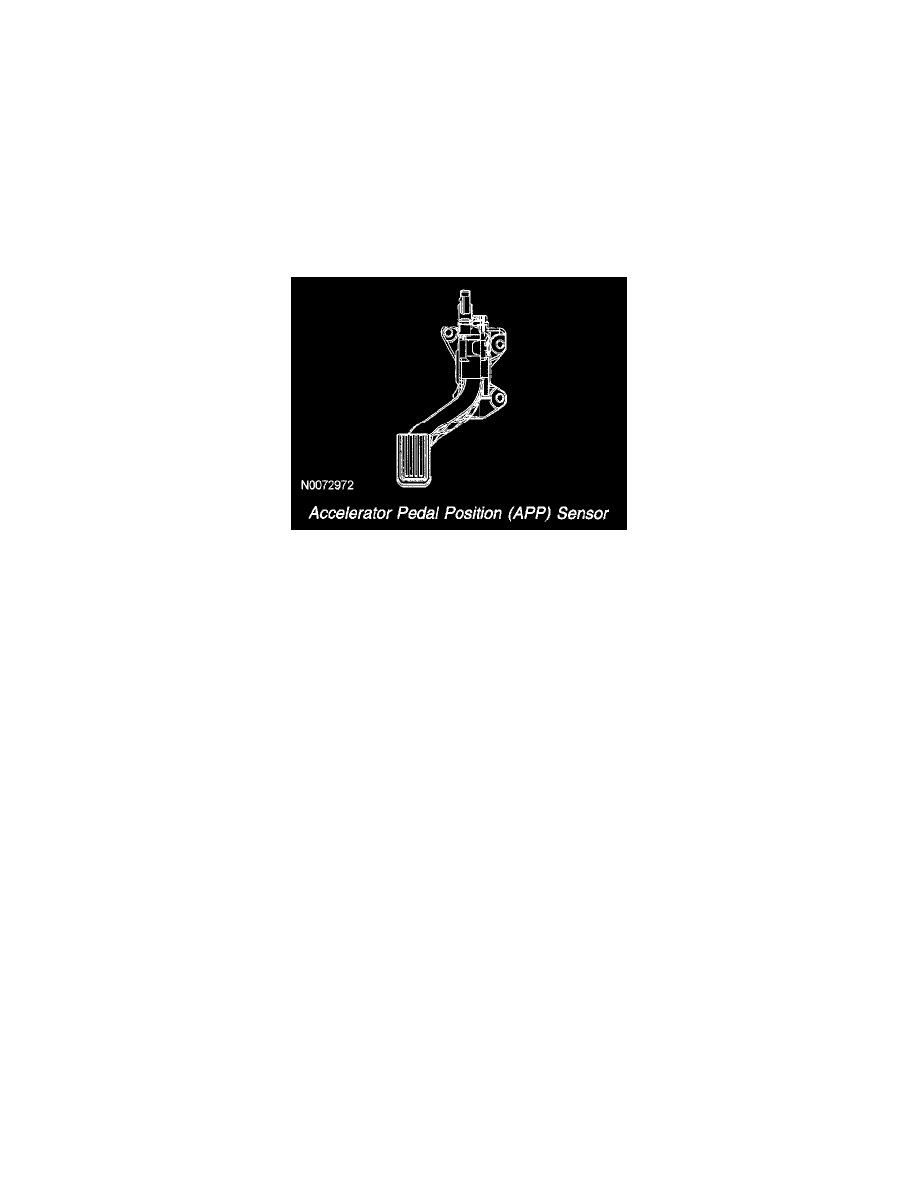Mariner 2WD L4-2.5L Hybrid (2010)

Accelerator Pedal Position Sensor: Description and Operation
ENGINE CONTROL COMPONENTS
Accelerator Pedal Position (APP) Sensor
There are two pedal position signals in the sensor. Both signals, APP1 and APP2, have a positive slope (increasing angle, increasing voltage), but are
offset and increase at different rates. The two pedal position signals make sure the powertrain control module (PCM) receives a correct input even if
one signal has a concern. The PCM determines if a signal is incorrect by calculating where it should be, inferred from the other signals. If a concern is
present with one of the circuits the other input is used. There are two reference voltage circuits, two signal return circuits, and two signal circuits (a
total of six circuits and pins) between the PCM and the APP sensor assembly. The reference voltage circuits and the signal return circuits are shared
with the reference voltage circuit and signal return circuit used by the electronic throttle body (ETB) throttle position (TP) sensor. The pedal position
signal is converted to pedal travel degrees (rotary angle) by the PCM. The software then converts these degrees to counts, which is the input to the
torque based strategy. For additional information, refer to Torque Based Electronic Throttle Control (ETC). See: Electronic Throttle Control
Module/Description and Operation
Accelerator Pedal Position (APP) Sensor
